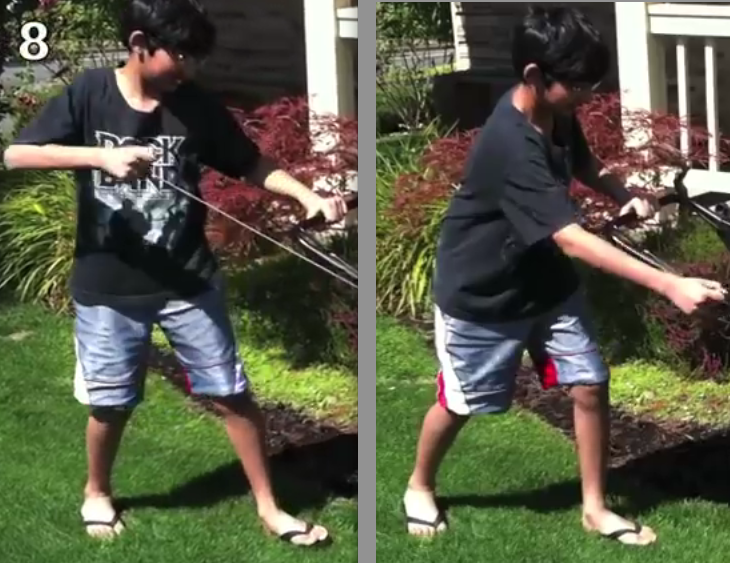That makes sense. I find it interesting that the guy in the video talks about releasing the lever of the wrist, but ignores the fact that he's doing the exact same thing with his forearm. It seems like another way of saying what I was saying about the pinch point on the disc. Extend it back to the shoulder and, in order, the upper arm opens up, then the forearm, then the wrist. All of which adds acceleration to the disc, but I still maintain that the last contact point of the forefinger on the disc adds spin and the last bit of releasing the lever or 'hammer throw' acceleration to the disc. Here's the thing about the hammer/hatchet analogy: while there's some value to it, where it falls apart is that the far half of the disc/hammer is exactly the same mass as the near half, which isn't like a hammer at all. A real hammer, or hatchet, is easy to throw end over end because nearly all the weight is in the far end of the object. A disc has its weight equally distributed, so throwing a disc is more like throwing a two-headed hammer (picture a hammer with a head at either end of the handle). By holding onto one of the heads of this imaginary hammer it is harder to make it go end over end (spin) by just accelerating the far end, because the near end is just as massive. All we're talking about in all of this is whipping the weight around a rotation point - (ignoring the body below the shoulder) first the elbow, then the wrist, then the pinch point were the disc is gripped. Each of these points has the weight beyond it rotating as they open up and accelerate the disc that much more. When I focus on the pinch point of index finger and thumb, the disc not only leaves their grip spinning more, it is accelerated as it whips around the pivot.
One last thought that occurs to me, which my or may not be grounded in truth. Thinking about the mythical two-headed hammer, one reason it's more difficult to throw it end over end is that, while the throwing motion may accelerate the far head more than the near (handle) head, you're still throwing that head, too. The inertia of the held handle head is nearly as great as the far head, and in the same direction, so it resists basically going backwards, which it must do if the hammer is to spin end over end when released. Reduce or eliminate the mass of the held head and it easily succumbs to spinning against the direction of throw because less mass means less inertia for the spin to counter. We've talked about the drag the grip must create when the disc is thrown and how it must be counter productive to the throw, but maybe what it does is it saps that inertia of the near (handle) end of the disc so that it doesn't put up as much of a fight being made to go backwards as the disc begins to spin. In other words, the last bit of resistance from the grip could be stealing just enough inertia from the near end of the disc so the disc doesn't resist spinning like a two-headed hammer would resist being thrown end over end.
(I hope this parses correctly.) Picture this figure as the two-headed hammer (the O's are the heads, and the line between is the handle connecting them. The arrows show the direction of velocity of both heads is in the same direction up to the release point. Having both moving in the same direction is counter productive to spin because the held head of the hammer must spin backwards to begin a clockwise rotation of the hammer.
(Drawing didn't parse correctly, as feared, so I'm adding the periods to move things to the right as the leading spaces were removed when I submitted. So ignore the rows of periods - they're just there to get things to line up properly.)
...........................O --> Direction of spin and velocity
...........................||
Spin Direction <-- O --> Direction of velocity
If the last bit of drag of the fingers on the disc steals a bit of the held end of the hammer's inertia, though, it will be less resistant to changing to the direction of spin. In the same action it allows you to transfer more acceleration to the far head as it pivots on the pinch point.
Just a thought.
